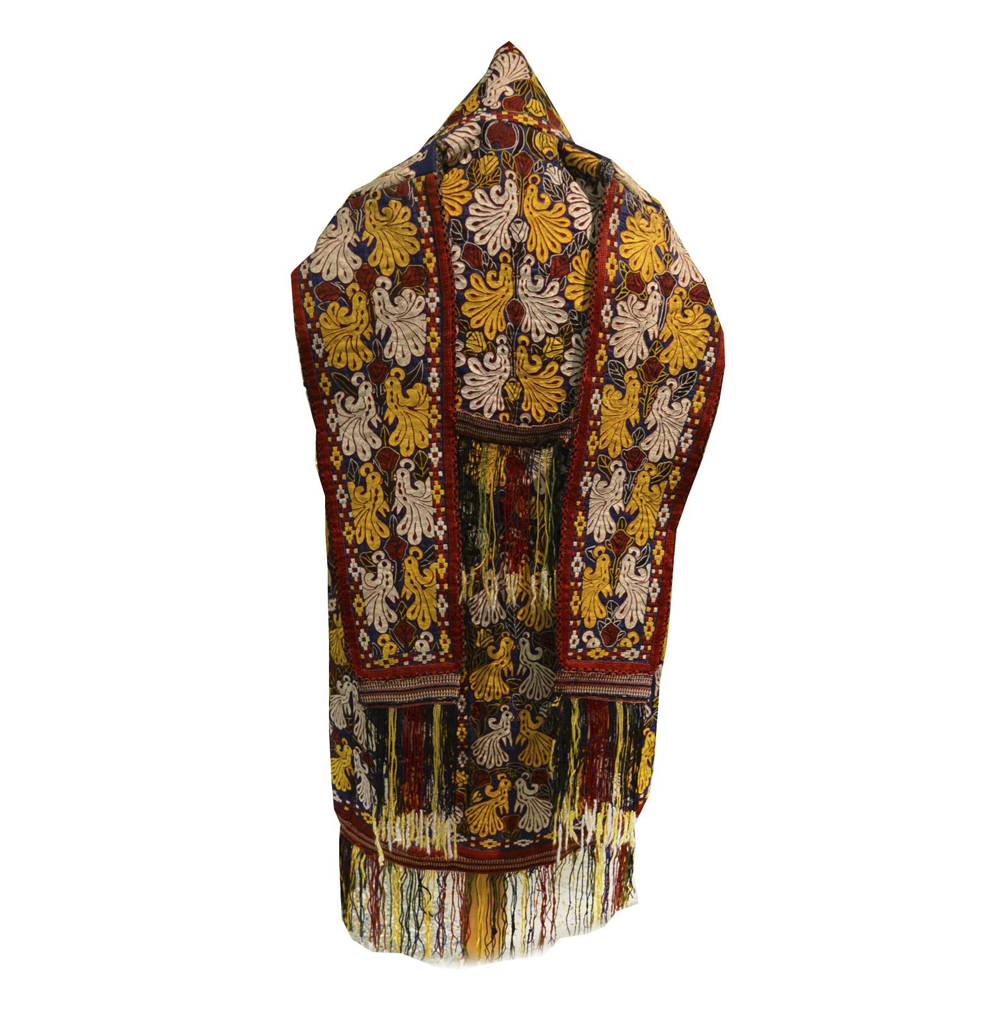
A chyrpy is a robe or mantel worn over the head and shoulders of Tekke Turkmen women. Once worn widely across Turkmenistan, the chyrpy is now primarily worn for ceremonial purposes. The colour of the chyrpy reflects the status of the wearer. For example, young women wear dark blue or black chrypys, married women wear yellow and women over 60 wear a white chyrpy. The sleeves on the back, as seen here, are purely decorative and serve no practical purpose.
Chyrpys are made and embroidered by women using a lacing stitch known as kesdi. The intricate embroidery is believed to offer the wearer protection.

This chyrpy, currently on display at The South Asia Collection, has an intricate and detailed design featuring motifs of deer, peacocks and tulips. The tulip is a prolific wildflower in Turkmenistan and is seen as a symbol of fertility as it is the first flower in the region to bloom in spring.
Also now on display in the Permanent Collection gallery are textiles from Uzbekistan, Afghanistan and India.


